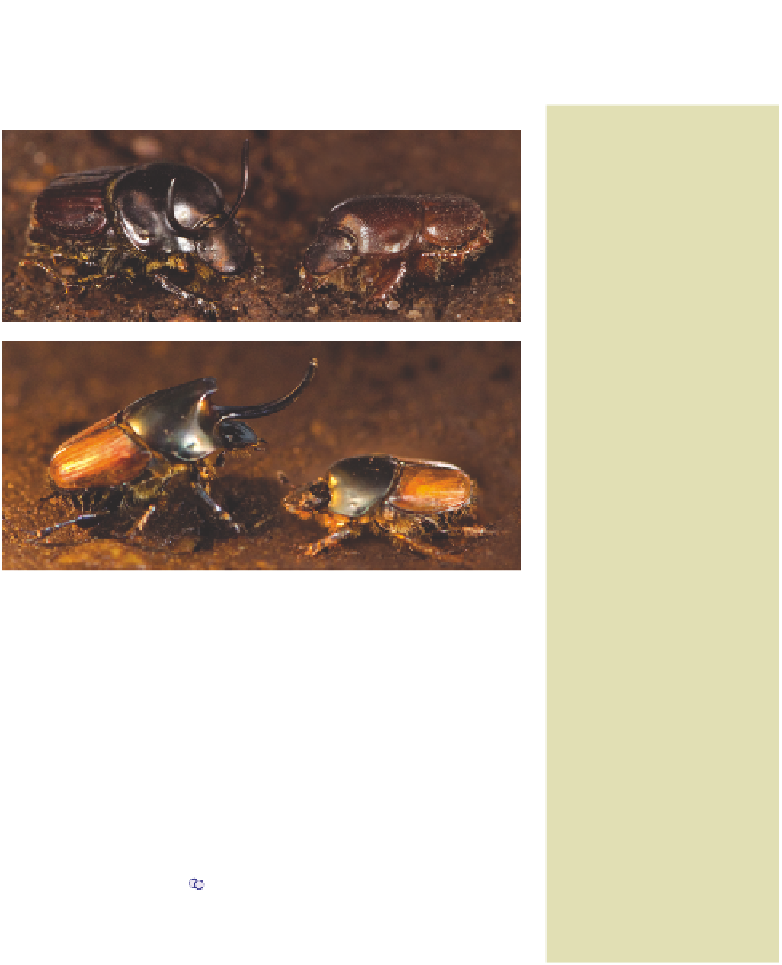Biology Reference
In-Depth Information
(a)
Fig. 5.13
(a)
Horned (left) and
hornless (right)
males of the dung
beetles:
(i)
Onthophagus
taurus
and (ii)
O. nigriventris
.
Photos © Douglas
Emlen. (b) Scaling
relationship
between horn
length and body
size (thorax width)
for 810
taurus
males collected
from pastures in
Durham County,
North Carolina.
Inserts illustrate
the frequency
distribution of
body sizes and
horn length. From
Moczek and
Emlen (2000).
With permission
from Elsevier.
(i)
(ii)
(
b)
5
100
4
50
0
Body size
3
100
50
0
2
Horn length
1
3.5
4.0
4.5
5.0
5.5
6.0
Body size (mm)
amount of dung available to a growing larva. A hormonal switch during larval
development (Emlen & Nijhout, 1999) leads to horn growth only above a critical
threshold body size (Fig. 5.13b).
Males of the two morphs compete for females in different ways. Female
Onthophagus
are attracted to vertebrate dung. In the neotropics
O. acuminatus
exploits the dung of
howler monkeys, while
O. taurus
exploits cattle and horse dung in many temperate
regions of the world. Females dig tunnels beneath the dung piles and lay their eggs in
brood chambers, which they provision with pieces of dung to feed their larvae (Fig. 5.14).
Male competition for females is intense. Major males fight to defend a female's tunnel
and then guard the entrance. Minor males attempt to sneak matings through side
tunnels and they scuttle off to safety if attacked by a major male (Fig. 5.14). In laboratory
Large male dung
beetles have
horns and fight,
small males are
hornless and
sneak













































































































































































































